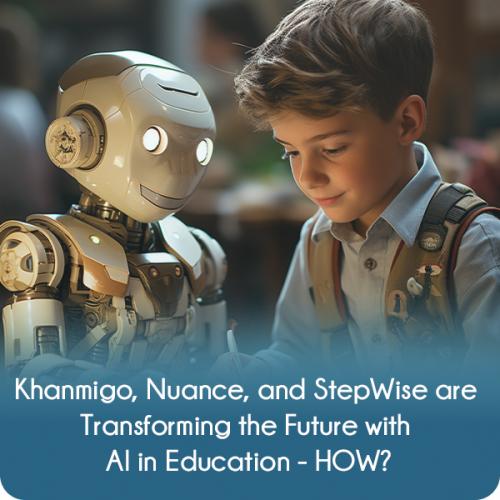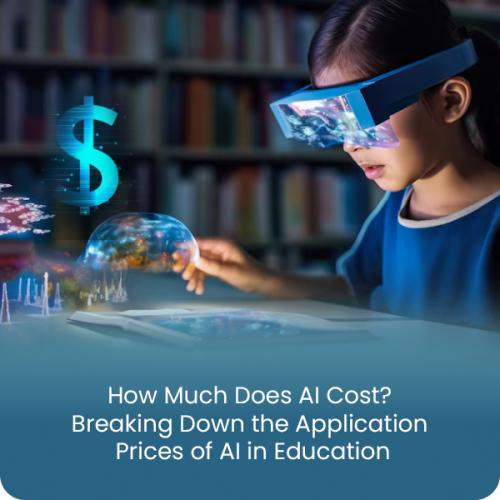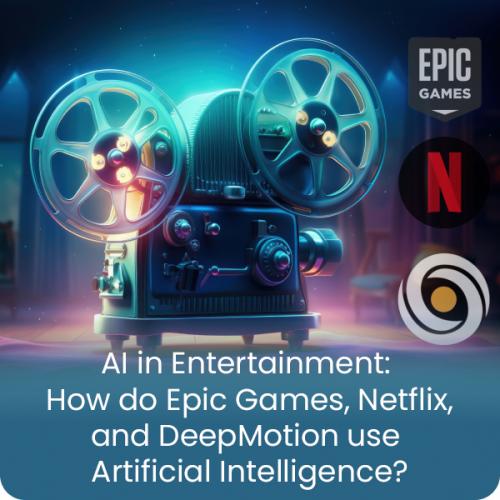KHANMIGO, NUANCE, AND STEPWISE ARE TRANSFORMING THE FUTURE WITH AI IN EDUCATION – HOW?
 AI in education is expanding at an unprecedented pace, driven by its potential to transform traditional teaching and learning methodologies. In 2024, over 60% of educational institutions in North America reported integrating some form of artificial intelligence in education.
AI in education is expanding at an unprecedented pace, driven by its potential to transform traditional teaching and learning methodologies. In 2024, over 60% of educational institutions in North America reported integrating some form of artificial intelligence in education.CURRENT TRENDS AND STATISTICS OF AI IN EDUCATION
The integration of AI in education in North America is a remarkable increase of 25% from 2020. These AI systems are not only enhancing personalized learning experiences but also improving operational efficiencies within educational institutions.
Furthermore, AI for educators has led to a 40% reduction in administrative tasks through automation. It allows teachers more time to focus on teaching and less on paperwork. For students, AI-enabled applications have contributed to a 30% improvement in learning outcomes. Particularly in STEM subjects, it provides customized learning paths and instant feedback.
In addition to these enhancements, AI-powered education applications are helping bridge gaps in education accessibility. It reaches an estimated 10 million students worldwide who lack traditional educational support. The applications offer interactive and engaging learning experiences, making education more accessible and inclusive.
These compelling statistics showcase AI’s current impact on teaching and hint at its transformative potential in reshaping the educational landscape.
ARTIFICIAL INTELLIGENCE IN EDUCATION – OVERVIEW
AI in education transforms traditional educational paradigms, introducing innovative approaches that enhance learning, teaching, and administrative efficiency. Its’ potential to personalize learning, automate administrative tasks, and provide real-time insights is reshaping how educators teach and students learn.
The importance of AI in education cannot be overstated. By leveraging machine learning algorithms and data analytics, AI systems can tailor educational content to the needs of individual students. It accounts for their learning pace, preferences, and potential knowledge gaps. This personalization helps to engage students more effectively and increases retention rates, making learning a more dynamic and interactive experience.
Introducing Khanmigo, Nuance, and StepWise, three pioneers in the educational technology space, each plays a crucial role in advancing AI for educators and institutions. Khanmigo focuses on adaptive learning technologies that customize educational experiences to individual student profiles. Nuance excels in natural language processing, enhancing communication between educators and students, particularly benefiting those with learning disabilities. StepWise utilizes AI to facilitate collaborative projects and interactive learning environments. It makes it easier for students to work together and for teachers to manage classroom activities efficiently.
These companies exemplify the diverse applications of AI in teaching and highlight how education applications powered by AI are augmenting traditional teaching methods.
THE RISE OF ARTIFICIAL INTELLIGENCE (AI) IN EDUCATION
Integrating AI in education is an enhancement and a profound transformation in how education is delivered and experienced. AI technologies are redefining the roles of students and educators, facilitating a more interactive, personalized, and effective learning environment.
BENEFITS OF USING AI IN EDUCATION
- AI FOR STUDENTS:
AI-driven applications provide personalized learning experiences that adapt to students’ learning styles and paces. These systems can identify areas where students struggle and adjust the curriculum in real time to address these challenges. It results in improved academic performance and enhanced learning engagement.
- AI FOR EDUCATORS:
AI tools assist educators by automating routine tasks such as grading and attendance, allowing them to dedicate more time to instructional activities and student interaction. Furthermore, AI can provide teachers with insights into student performance, helping them tailor their teaching strategies to meet their classes’ needs better.
- AI FOR PARENTS:
AI applications extend the classroom into the home, enabling parents to monitor their children’s progress and understand their educational needs better. These tools offer actionable insights into a child’s learning habits and areas for improvement. This fosters a supportive home learning environment.
- AI IN TEACHING INSTITUTES:
AI systems help educational institutions become efficient in scheduling and resource allocation. Artificial Intelligence-driven analytics can predict enrollment trends, optimize class sizes, and manage resources effectively. Also, it ensures that institutions can provide the best educational experience.
TYPES OF ARTIFICIAL INTELLIGENCE INTEGRATION
- STUDENTS’ SUPPORTIVE SYSTEM:
AI systems act as personalized tutors, offering additional support and resources tailored to the student’s academic needs and learning style.
- EDUCATOR’S SUPPORTIVE SYSTEM:
These systems provide educators with comprehensive analytics on student performance and class trends, enabling targeted interventions and curriculum adjustments.
- ACADEMY SUPPORTIVE SYSTEM:
AI helps manage administrative and logistical tasks within educational institutions, from streamlining the admission process to optimizing resource allocation.
KHANMIGO: PERSONALIZING LEARNING EXPERIENCES
Khanmigo is at the forefront of AI in education, specializing in developing adaptive learning technologies that tailor educational content to each student’s unique needs. With artificial intelligence development in education, Khanmigo is helping to transform passive learning into an active, personalized experience that engages and motivates students.
Khanmigo’s platforms utilize advanced algorithms to analyze student performance continuously and adjust the difficulty of tasks and the pace of instruction accordingly. This dynamic approach ensures that students remain challenged but not overwhelmed, optimizing their learning potential. The system can identify student response patterns, which helps predict areas where they might struggle and preemptively adjust the curriculum to address potential weaknesses.
STATISTICAL DATA ON BENEFITS OF USING AI IN EDUCATION:
- Studies involving Khanmigo’s technology have shown that students using their adaptive learning platforms demonstrate a 50% faster mastery of subjects than traditional methods.
- Furthermore, retention rates for material learned via these AI-enhanced platforms are significantly higher, with an increase of up to 60% in long-term retention of course material.
- Engagement levels have also seen a notable boost, with an 80% increase in regular interaction with educational content. It highlights the effectiveness of personalized learning pathways in maintaining student interest and involvement.
NUANCE: REVOLUTIONIZING COMMUNICATION IN CLASSROOMS
Nuance, a leader in speech recognition and natural language processing, is applying artificial intelligence in education to revolutionize how educators and students interact in the classroom. This technology is particularly transformative for students with learning disabilities, who may require more tailored communication methods.
Nuance’s AI-driven tools are designed to facilitate more transparent and more effective communication between teachers and students. By utilizing advanced speech recognition and processing technologies, these tools help translate teachers’ instructions into formats that are more accessible to all students, including those with auditory processing disorders or hearing impairments.
STATISTICAL DATA ON BENEFITS OF USING AI IN EDUCATION:
- Implementing Nuance’s technology in classrooms has shown a 40% improvement in comprehension scores among students with learning disabilities. Because the AI tools help break down barriers to understanding complex instructions and linguistic nuances.
- Additionally, speech-to-text features allow students to engage with lessons in real time. It promotes inclusivity and ensuring that all students can participate fully in educational activities. Surveys report a 30% increase in class participation rates in environments where Nuance’s AI tools are utilized.
- Teacher feedback has been overwhelmingly positive, with 85% of educators reporting that it has significantly eased the communication in classrooms. It enhances overall teaching effectiveness.
STEPWISE: FACILITATING COLLABORATIVE LEARNING
This app is making significant strides in AI in education by developing AI-driven platforms to enhance collaborative learning environments. Their technology supports interactive, project-based learning, where students can work together more efficiently, regardless of physical location.
StepWise’s AI tools facilitate group learning by organizing, managing, and mediating collaborative projects. These systems use natural language processing to understand and structure group communication, ensuring all members can contribute effectively and equitably. AI algorithms help to assign roles based on individual strengths and learning needs, promoting a balanced team dynamic and maximizing the educational value of group activities.
STATISTICAL DATA ON BENEFITS OF USING ARTIFICIAL INTELLIGENCE IN EDUCATION:
- Schools that have incorporated StepWise’s collaborative platforms report a 45% increase in project completion rates and a 35% improvement in the quality of group assignments, as measured by teacher evaluations.
- Feedback from students indicates a 50% increase in satisfaction with group work, attributing this to better communication and more explicit role distribution facilitated by AI tools.
- Additionally, educators have noted a 25% reduction in group conflicts and a smoother workflow, as AI helps preemptively resolve misunderstandings and distribute tasks effectively.
HOW TO APPLY AI IN EDUCATION FOR TEACHING?
The implementation of AI technologies in education can transform teaching and learning processes. Here’s a breakdown of various ways AI can be integrated into educational settings, each with specific examples to illustrate the potential impact:









Comments